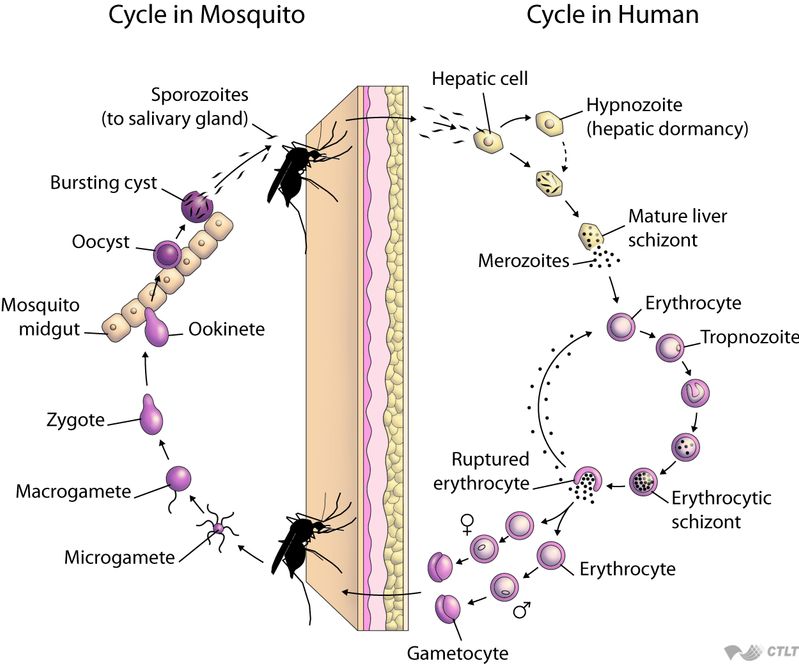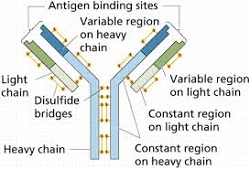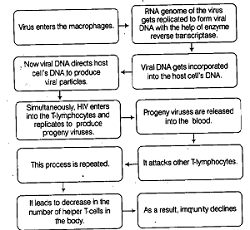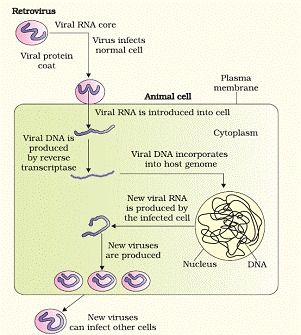
myCBSEguide App
Download the app to get CBSE Sample Papers 2023-24, NCERT Solutions (Revised), Most Important Questions, Previous Year Question Bank, Mock Tests, and Detailed Notes.
Install NowHuman Health and Disease class 12 Notes Biology in PDF are available for free download in myCBSEguide mobile app. The best app for CBSE students now provides Human Health and Disease class 12 Notes latest chapter wise notes for quick preparation of CBSE board exams and school-based annual examinations. Class 12 Biology notes on chapter 8 Human Health and Disease are also available for download in CBSE Guide website.
CBSE Guide Human Health and Disease class 12 Notes Biology
CBSE guide notes are the comprehensive notes which covers the latest syllabus of CBSE and NCERT. It includes all the topics given in NCERT class 12 Biology textbook. Users can download CBSE guide quick revision notes from myCBSEguide mobile app and my CBSE guide website.
Class 12 Biology notes Chapter 8 Human Health and Disease
Download CBSE class 12th revision notes for chapter 8 Human Health and Disease in PDF format for free. Download revision notes for Human Health and Disease class 12 Notes and score high in exams. These are the Human Health and Disease class 12 Notes prepared by team of expert teachers. The revision notes help you revise the whole chapter 8 in minutes. Revision notes in exam days is one of the best tips recommended by teachers during exam days.
Download Revision Notes as PDF
CBSE Class 12 Biology Revision Notes Chapter 8 Human Health and Disease
The state of complete physical, mental and social well beings is called health. Health simply does not simply means disease-free condition or physical fitness. Health is affected by-
a. Genetic disorders – the defect which child inherits from it parents.
b. Infection from microbes or other organisms.
c. Lifestyle- includes food and water we take, exercise and rest.
Good health can be maintained by
- Balanced diet.
- Personal hygiene
- Regular exercise
- Awareness about the disease and their effect
- Immunization against the infectious disease
- Proper disposal of wastage
- Control of vectors
- Maintenance of hygienic food and water.
Disease – Diseases can be broadly grouped into infectious and non-infectious.
a) Infectious disease -Diseases which are easily transmitted from one person to another, are called infectious diseases e.g AIDS, common cold, malaria, tuberculosis etc
b) Non-infectious disease – Diseases which cannot transmitted from one person to another, are called non- infectious diseases e.g cancer, hypertension, diabetes etc.
Common Diseases in Humans:
- The disease-causing microorganisms like bacteria, virus, fungus, protozoa, helminthes are called pathogen.
- The pathogen can enter the body by various means and multiply and interfere with normal vital activities resulting in morphological and functional damage.
| Name of disease /test | Causal organisms | Symptoms | Effects |
| Typhoid / Widal test | Salmonella typhi | Sustained high fever, weakness, stomach pain, | |
| Pneumonia | Streptococcus pneumoniae and Haemophilus influenzae | Fever, chills, cough and headache. | Alveoli get filled with fluid leading to severe problems in respiration. |
| Common cold | Rhino viruses | Nasal congestion and discharge, sore throat, cough and headache. | Infect the nose and respiratory passage. |
| Malaria | Plasmodium (P. vivax, P. malaria and P. falciparum) | The chill and high fever recurring 3 to 4 days. | Parasite multiply within lever cells and then attack the RBCs. |
| Amoebiasis or Amoebic dysentery | Entamoeba histolytica | Constipation, abdominal pain, cramps, stool with mucous and blood clot. | Infect the large intestine. |
| Ascariasis | Ascaris (Helminthes) | Internal bleeding, muscular pain, fever, anemia etc. | Healthy person get infected through water, vegetable etc. |
| Elephantiasis or filariasis | Wuchereria (W. bancrofti and W. malayi) | Inflammation in the lower limb and genital organs. | Lymphatic vessels of lower limbs get blocked. |
| Ring worms | Microsporum, Trichophyton and Epidermophyton | Appearance of dry, scaly lesions on various part of body. | Infects the skin, nail and scalp. |
Life cycle of plasmodium : Plasmodium enters the human body as small sporozoites through the bite of infected female anopheles mosquito and multiplies within the lever cells. Later attacks the RBCs resulting the rapture with release of toxic substance, haemozoin, which is responsible for high fever and chill recurring every three to four days.
Malarial parasite requires two hosts, human and anopheles mosquito to complete their life cycle. Female anopheles is vector of this disease to human beings.
Flowchart to show lifecycle of Plasmodium

Immunity – the ability of host cells to fight the disease causing microorganism due to immune system is called immunity. There are two types of immunity-
Innate immunity – non-specific types of defence presents at the time of birth and provide different kinds of barriers to the entry of foreign agents into the body. it consists of four types of barrier-
a. Physical barrier- skin, mucus coating of epithelium lining the respiratory, gastrointestinal and urogenital tract.
b. Physiological barrier- acid in stomach and saliva in mouth.
c. Cellular barrier- leucocytes, neutrophils, monocytes.
d. Cytokine barriers- virus infected cells secretes protein called interferon.
| No | Innate Immunity | Acquired (Adaptive) Immunity |
| 1 | Present from birth itself | Develops during life time |
| 2 | The immunity remains throughout life. | Can be short lived or lifelong. |
| 3 | Contact or exposure with pathogen or its antigen is not essential. | Contact with pathogen or its antigen is essential. |
| 4 | Innate immunity is inheritable. | Acquired immunity cannot be passed to the next generation except for a brief period to neonates. |
| 5 | It protects the individuals from contraction of diseases of other organisms. | It protects the individuals from pathogens present on other members of the same species. |
Acquired Immunity- pathogen specific defence characterised by memory. When our body encounters a pathogen first time produces a response called primary response of low intensity. Subsequent encounter by same pathogen produce highly intensified response called secondary response or anamnestic response due to memory of first encounter.
Primary and secondary responses are carried out with the help of B-lymphocytes and T-lymphocytes. B-lymphocytes produce army of protein called antibodies each having two light and two heavy chains.
It involves two types of lymphocytes –
- B lymphocytes: Show humoral immune response (HI)
- T lymphocytes: Show cell mediated immunity (CMI)
Structure of an Antibody:
- The antibodies are protein molecules called immunoglobulins and are of various types like IgA, IgM, IgE, IgG.
- Each antibody molecule consists of four polypeptide chains, two are long called heavy chains and other two are short called light chains. Both are arranged in the shape of ‘Y’, hence an antibody is represented as H2L2.

On the basis of production of antibodies, immunity can be further categorised as –
- Active immunity: Body produces its own antibodies against antigens
- Passive immunity: Readymade antibody is transferred from one individual to another
- Colostrum (contains antibodies IgA) is an example of passive immunity provided by the mother to her child.
Different types of antibodies produce in blood include IgA, IgM, IgEete. They are called humoral immune response due to presence in blood.
Human immune system can distinguish between self and foreign molecules or foreign bodies. Sometimes, due to genetic or unknown reasons, the body attack self-cells. This results in damage to the body and called auto-immune disease. Rheumatoid arthritis is due to this effect
Allergies – the exaggerated response of immune system to certain antigens present in the environment is called allergy. The substance to which such immune response is produced is called allergens. The antibodies produced due to these are IgE types. Allergy is due to secretion of chemicals like histamine and serotonin from the mast cells.
Immune system in the body- the human immune system includes lymphoid organs, tissue, cells and soluble molecules like antibodies.
Lymphoid organs are the organs where origin and maturation and proliferation of lymphocytes occur. Primary lymphoid organs include bone marrow and thymus.
After maturation lymphocytes migrate to secondary lymphoid organ like spleen, lymph nodes, tonsils, peyer’s patches of small intestine and appendix. They provide the sites for interaction lymphocyte with antigens.
There is lymphoid tissue also located within the lining of respiratory, digestive and urogenital tract called mucosal associated lymphoid tissue ( MALT). It constitute 50% of lymphoid tissues in human body.
AIDS (Acquired Immuno Deficiency Syndrome) was first reported in 1981. It is caused by HIV (human Immuno deficiency virus), a retrovirus. Transmission of HIV virus occurs by-
a. Sexual contact with infected person
b. Transfusion of contaminated blood and blood products
c. Sharing infected needles as in intravenous drug abusers
d. Infected mother to her child through placenta.
Replication of retrovirus in Macropahges

AIDS/HIV does not spread by physical contact. It spread only through body fluids. There is always time lag between infection and appearance of symptoms that may vary from 5-10 years.
Diagnostic test for AIDS is ELISA (enzyme-linked Immuno-sorbent assay). The treatment of this disease with anti-retroviral drug is partially effective and just prolonged the life but not prevents the death.

Cancer is one of the most dreaded diseases of human beings and is a major cause of death all over the world. Normal cells show a property called contact inhibition by virtue of which contact with other cells inhibit their uncontrolled growth. Cancer cells lost this property.
| Cell Characteristics | Normal Cells | Cancer Cells |
| Morphology | Normal cells have uniform shapes and sizes | Cancer cells have a large variety of sizes and shapes The nucleuses have irregular structure and have relatively small cytoplasm. |
| Reproduction and Cell Death | Cells stop dividing when too much of its kind are present. These cells grow and divide in a controlled manner and follow a predictable life cycle. Normal cells undergo the process of apoptosis – self destruction if they detect abnormalities and damage in their organelles. | Cancer cells don’t stop growing resulting to appearance of a tumor ( a cluster of mutant cells) |
| Communication | Normal cells communicate with each other for proper functioning. | Cancer cells do not communicate with each other |
| Adhesion and Invasion | These cells have external membranes that allow them to bond with other cells. | Cancer cells lose the molecules that keep cells bonded together. These cells have the ability to invade or spread to other parts of the body by travelling through the blood stream or the lymphatic system – metastasis. |
| Specialization | Normal cells start out as immature cells and mature with certain specialized functions. | Cancer cells do not mature, and undergo apoptosis. Instead these cells become immature overtime. Cancer cells are primitive and they don’t have specialized functions. |
| Signal Recognition | Normal cells recognize signals. They know when there are enough new cells and stops dividing. | Cancer cells don’t recognize signals. Hence these cells erratically reproduce mutated cells. |
Cancerous cells continue to divide giving rise to masses of cells called tumors. There are two kind so tumors-
(a) Benign tumors
(b) Malignant tumors
| Benign Tumor | Malignant Tumor |
|
|
|
|
|
|
|
|
|
|
|
|
Causes of cancer – cancerous neoplastic cell may be induced by physical, chemical and biological agents called carcinogens. Cancer causing viruses called oncogenic virus have gene called viral oncogenes. Several genes called cellular oncogenes (c-onc) or proto oncogenes have been identified in normal cells which, when activated under certain conditions, could lead to oncogenic transformation of the cells.
Cancer detection and diagnosis-cancer detection is based on biopsy and histopathological study of the tissues, blood and bone marrow test for increased cell counts. Radiography, CT (computed tomography), MRI (magnetic resonance imaging) are very useful to cancers of internal organs.
Treatment of Cancer-
- Surgical – cancerous tissues are surgically removed.
- Radiotherapy – tumor cells are irradiated lethally by radiation.
- Chemotherapy – drugs are used to kill cancerous cells, but shows side effects like hair loss, anemia, etc.
- Immunotherapy – patients are given with alpha-interferon which activate their immune system and help in destroying the tumor
Drugs and Alcohol Abuse
Commonly abused drugs include opioids, cannabinoids and coca alkaloids obtained from flowering plants and a few from fungi.
Opioids are the drugs which bind to specific opioids receptors present in our central nervous system and gastrointestinal tract. Heroin commonly called smack is chemically diacetylmorphine which is a white, odourless, bitter crystalline compound. It is extracted from the latex of poppy plant (Papaversomniferum).Generally taken by snorting and injection, heroin is a depressant and slows down body functions.
Cannabinoids are a group of chemicals which interact with cannabinoid receptors present in the brain. Natural cannabinoids are obtained from the inflorescence of the plant cannabis sativa. They include marijuana, hashish, charas and gangja. They generally taken by inhalation and oral ingestion, these are known for their effects on cardiovascular system of the body.
Coca alkaloid or cocaine is obtained from coca plant Erythroxylum coca, native to South America. It interferes with the transport of the neuro-transmitter dopamine. Cocaine, commonly called coke or crack is usually snorted. It has a potent stimulating action on central nervous system, producing a sense of euphoria and increased energy.
Adolescence and Drug abuse
- Adolescence is the period during which the child becomes matured.
- It is between 12 – 18 years of age.
Causes of drug abuse –
- Curiosity
- Adventure
- Excitement
- Experimentation
- Stress or pressure to excel in examination
Effects of drug/alcohol abuse –
- Reckless behaviour
- Malicious mischief
- Violence
- Drop in academic performance
- Depression, isolation, aggressiveness, etc.
Dependence is the tendency of the body to manifest a characteristic and unpleasant withdrawal syndrome if regular dose of drug/alcohol is abruptly discontinued that includes anxiety, shakiness, nausea and sweating.
Prevention avoid undue peer pressure, education & counselling, seeking helps from parents and peers, seeking professional and medical help etc
CBSE Class 12 Revision Notes and Key Points
Human Health and Disease class 12 Notes Biology. CBSE quick revision note for class-12 Chemistry Physics Math’s, Biology and other subject are very helpful to revise the whole syllabus during exam days. The revision notes covers all important formulas and concepts given in the chapter. Even if you wish to have an overview of a chapter, quick revision notes are here to do if for you. These notes will certainly save your time during stressful exam days.
- Physics
- Chemistry
- Mathematics
- Biology
- Accountancy
- Economics
- Business Studies
- Computer Science
- Informatics Practices
- English Core
- History
- Physical Education
To download Human Health and Disease class 12 Notes Biology, sample paper for class 12 Physics, Chemistry, Biology, History, Political Science, Economics, Geography, Computer Science, Home Science, Accountancy, Business Studies and Home Science; do check myCBSEguide app or website. myCBSEguide provides sample papers with solution, test papers for chapter-wise practice, NCERT Human Health and Disease, NCERT Exemplar Human Health and Disease, quick revision notes for ready reference, CBSE guess papers and CBSE important question papers. Sample Paper all are made available through the best app for CBSE students and myCBSEguide website.
- Reproduction in Organisms class 12 Notes Biology
- Sexual Reproduction in Flowering Plants class 12 Notes Biology
- Human Reproduction class 12 Notes Biology
- Reproductive Health class 12 Notes Biology
- Principles of Inheritance and Variation class 12 Notes Biology
- Molecular Basis of Inheritance class 12 Notes Biology
- Evolution class 12 Notes Biology
- Strategies for Enhancement in Food Production class 12 Notes Biology
- Microbes in Human Welfare class 12 Notes Biology
- Biotechnology Principles and Processes class 12 Notes Biology
- Biotechnology and its Applications class 12 Notes Biology
- Organisms and Populations class 12 Notes Biology
- Ecosystem class 12 Notes Biology
- Biodiversity and Conservation class 12 Notes Biology
- Environmental Issues class 12 Notes Biology

Test Generator
Create question paper PDF and online tests with your own name & logo in minutes.
Create Now
myCBSEguide
Question Bank, Mock Tests, Exam Papers, NCERT Solutions, Sample Papers, Notes
Install Now
A very confined and useful notes for excelling in exams.. I love it… Thank you so much….
Very helpful thanks very much
Easy language and understandable
Nice notes
Very very helpful notes. …..thank u very much… . ??
Very very helpful notes. …..thank u very much… . ??
Thank you so much for this notes. I found it very helpful ??
Vary good notes
Thenku this notes …..
Is very helpful me……
Very very usefull notes at end point to revise